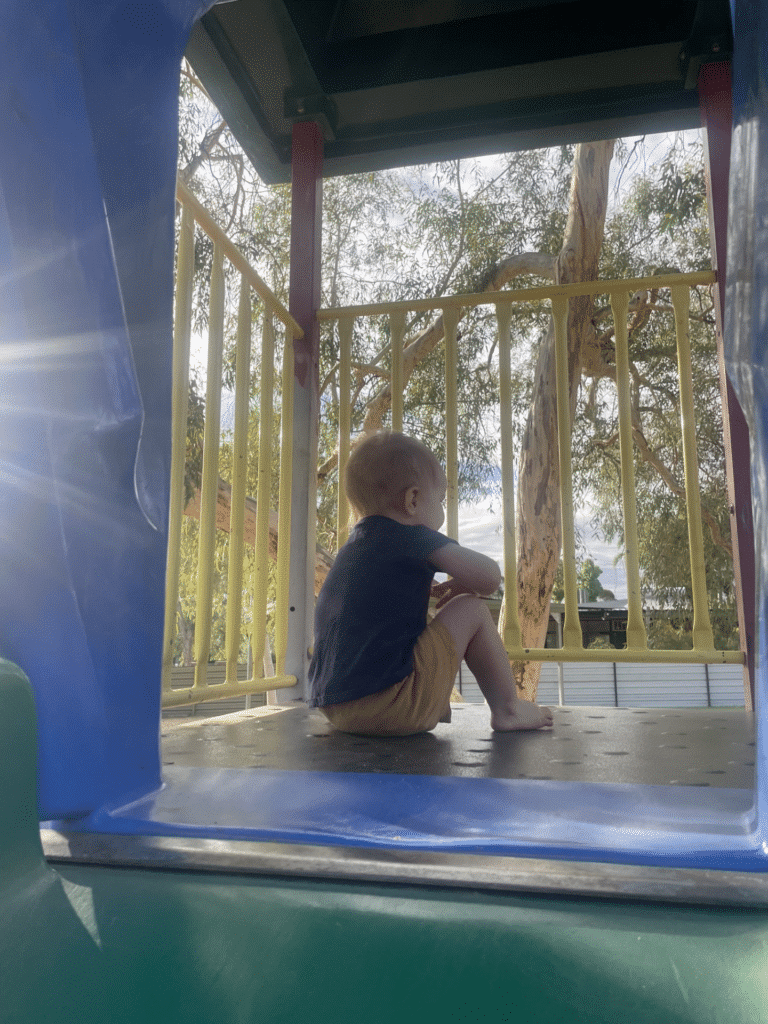It was no surprise when I read about the latest climate record to be broken – February was the hottest month on record globally. Not an isolated temperature anomaly, it was the ninth month in a row to break such a record.
And here in south-east Queensland I’ve felt it. It was the most uncomfortable and the sweatiest summer I’ve experienced yet (I’m less excited than ever about the prospect of entering the “hot flush” phase of life).
Persistent humidity and high overnight temperatures have meant my family has had little relief from the heat at home, our sleep disturbed for months. During the day working from home without an air-conditioned office I’ve had to rely on regular shirt changes and a cold, wet cloth on my neck to try and stay comfortable and keep focused.
The irony is not lost on me that my work this summer involved reading the heart wrenching stories of mothers trying to keep their kids safe in extreme heat, whilst also trying to keep alive the dream of a carefree summer. It’s been an exhausting and impossible mission for many.
Imagine telling your toddler at 8:30am, day after day, that it’s too hot to play outside. For Alice Springs Mum, Julia this has been a consistent mantra during summer, ‘It’s not been possible for my daughter, who is almost two, to play outside after about 8:30am in the morning. All activities have to be indoors. She is just starting to talk and some mornings says “Go park”, but we have to tell her it’s too hot.“
Julia is among the growing voices of mothers across Australia who are echoing shared concern and frustration. With the increasing frequency and severity of extreme heat, mothers are finding themselves navigating the discomfort of sweltering temperatures along with the safety and wellbeing of their children.

Laura, a Sydney mother of three young children, shared the anguish of living in a rental property without air-conditioning. “Our house has been extremely hot over summer, it’s impossible to cool it down after a hot day. We rely on pedestal fans to cool the house, but really, they are just circulating the hot air,” she laments. Heat is no longer a mere discomfort as families experience prolonged and more severe heatwaves, even the simple act of restful sleep becomes a luxury. It’s a burden Laura feels acutely. “I feel extremely guilty that my kids can’t sleep soundly when it’s too hot,” she said.
For another Sydney Mum, Madeleine, caring for a newborn baby during brutal heatwaves only compounds the challenges of staying cool and calm on hot days. “There have been many days that we can’t take her out as it isn’t safe,” she shares. Inside their apartment building, also without air-conditioning, the heat becomes an oppressive force, lingering long after the sun sets. Despite their best efforts to stay cool with fans and closed windows, the stifling heat persists, “it will stay over 29 degrees for days after one 35 degree day. Nothing helps. It’s terrifying. I can’t bear the thought of what her children might experience if this is what life is like for us now with the trajectory we’re on. We need drastic climate action now.”
In Brisbane where scorching overnight temperatures have persisted for over 60 days, Kylee’s experience reflects the toll of prolonged heat and humidity on mental well-being, as she finds herself trapped indoors with her toddler. “It feels like there is no end in sight,” she confides, grappling with anxiety and a sense of confinement. The once-cherished arrival of summer now evokes a sense of dread, a stark reminder of the profound shifts wrought by escalating temperatures on our collective psyche.
From the arid landscapes of Alice Springs to the urban sprawl of our cities, the impact of heatwaves reverberates far and wide. Julia’s poignant account of her daughter’s longing to play outside speaks to the reality faced by families impacted by extreme heat. “You expect it to be hot at this time of year when you live in Alice Springs,” Julia reflects, “but this is the worst summer I have experienced.” Her words serve as a sobering reminder that even in regions accustomed to heat, the escalating severity of climate change presents a formidable challenge.
In Perth, mother of a 3 year-old-toddler, Emma (pictured in main image above) highlights some of the broader societal impacts of heatwaves, as families find themselves confined indoors, unable to partake in the simple joys of summertime. “Long, early, and repeating heatwaves are causing us all to feel trapped in our home when we would once have been spending these days happily outdoors,” she reflects sadly. Daycare centers too are grappling with the dangers of extreme heat and keep children indoors. At home and at daycare, Emma’s son misses out on experiences once taken for granted, underscoring the far-reaching consequences of climate change on our children’s lives.
These stories remind me just how lucky I am, my kids are teenagers now, I haven’t had to navigate the anxiety of caring for a baby or young children in the midst of heatwaves and persistent humidity. Yes, my kids have been uncomfortable, they’ve been unusually fatigued and crankier than usual. But my kids have experienced many carefree summers immersed in nature, and that’s something we can no longer take for granted.
Without action to reduce global heating caused by carbon pollution, this crisis will only worsen. A recent report by advocacy group Parents for Climate highlights that by 2050, hundreds of thousands of Australian children will face severe and extreme heat that risks their life, their health, and 7 million will face higher and more intense heatwaves.
As we bear witness to the lived experiences of these mothers, it is abundantly clear that the time for action is now. We cannot afford to ignore the realities of extreme heat, nor the toll it takes on primary caregivers and communities. The path forward demands bold and decisive climate action, not only for the sake of our children and future generations, but for us all.

